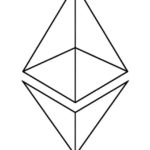Decentralized Infrastructure: The Future of Computing
The tech world has long embraced abstraction. we moved from physical servers to the cloud, simplifying infrastructure. This shift brought speed and convenience.However, it also came with a loss of control.
Now, the AI boom and IoT growth expose the cloud’s limitations. Centralized clouds face issues like high costs and latency. The solution? Decentralized Physical Infrastructure Networks (DePIN).
DePINs are edge-first and user-owned. They use crypto incentives to reward contributors. This model aligns the gap DePIN fills by introducing tokenized, programmable rewards into the model. In DePIN networks, contributions are compensated. Share bandwidth? You get paid. Deploy a GPU? You earn tokens. Host data reliably? You’re part of the infrastructure and rewarded for it. These aren’t gamified points on a leaderboard. They’re real assets, with tangible value and liquidity. And when networks
DePIN: The Future of decentralized Infrastructure
DePIN projects are transforming the way we think about infrastructure. They reward real-world contributions, growing organically through utility and word of mouth. No need for VC-funded hype or ad campaigns.
This isn’t just about distributed infrastructure. It’s sound economics in action.The revolution is underway,and it’s all about decentralization.
When I started in decentralized computing, my goal was to make node infrastructure scalable and usable. I noticed that the most engaged operators weren’t cloud-first—they were edge-native. They built their own rigs, valuing openness, ownership, and performance over dashboards.
This mindset led me to believe that the future lies in decentralized orchestration. If you can distribute nodes, you can distribute anything. The best DePIN projects are breaking up monoliths and turning the internet into a mesh.
We often discuss DePIN in terms of scale and cost-efficiency. But there’s a deeper layer: privacy. In a digital world where every action is tracked, owning your infrastructure becomes crucial. Edge-first, user-owned networks mean your data stays local.
Clouds aren’t going away, but the future won’t be cloud-only. It will be a mix of cloud and edge. depin will be the connective tissue, making this vision work at scale, sustainably, and with aligned incentives.
The next generation of infrastructure won’t be built in server farms. It’ll be built by people,one node at a time.








